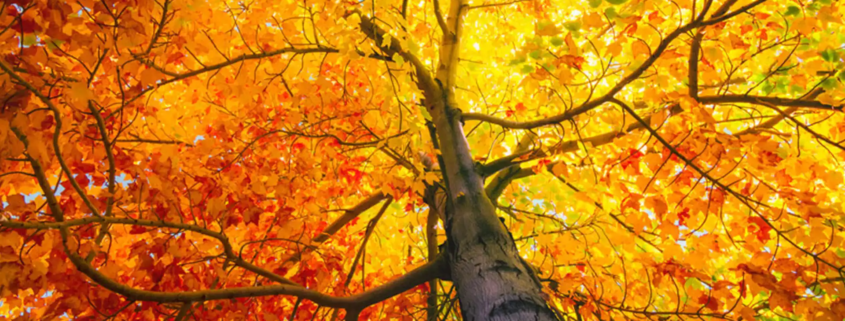Important tree care tips and insurance implications
Planting a tree in your yard can be beneficial to your family. Not only do trees provide beauty, but they also offer many additional benefits such as:
- Cleaning the air we breath
- Increasing your home’s value
- Providing shelter for birds and other animals
- Preventing soil erosion
- Reducing rainwater runoff
- Helping relieve stress and anxiety
While severe weather can bring down trees, causing property damage, it’s important to realize there are other reasons a tree or branch may fall. Reasons include insect infestations, old age, poor soil conditions, malnutrition, and flooding.
Signs your tree could fall
There’s no way to tell exactly when or if your tree will fall. However, there are some things to watch for.
1. Leaning tower of Pisa. There are several trees in my neighborhood that are leaning. However, at this point, they’re smaller and of no concern. If you have large trees in your yard with a significant lean, it may be time to contact a professional to discuss their removal. Tree lean can be caused by wind or root damage.
2. Inadequate nutrients. If you notice dead or falling branches, it may result from a lack of nutrients. Thoroughly inspect your tree(s). If the branches are low and small, you may be able to remove them yourself. If you need help, contact a professional for assistance.
3. Falling Leaves. Leaves can fall from your tree(s) for a variety of reasons, such as:
- Disease
- Too much or too little water
- Canopy crowding
If fallen leaves are green, your tree is probably fine. If the leaves are discolored or look sick, there may be an issue. In addition, if the leaves are falling from the outside in, there may be a root issue. Lastly, some diseases or pests can attack the tree and destroy it over time, weakening it and posing a threat to your family.
4. Proximity to water. Living on a waterfront is a dream of many. However, watch out for trees that are close to the water. Excessive water can cause the roots to become waterlogged. Over time, this can cause them to decay and decrease structural stability.
5. Cracks in the trunk. It’s normal for trees to have cracks or holes. If they’re large, it’s vital to have them examined to see how extensive they are. They could be a sign of a diseased tree, and again, the structural integrity can be compromised.
Tips for maintaining healthy trees
1. Proper mulch. Mulch can help retain moisture, which is suitable for the tree’s root system. It also keeps the soil cool and can prevent weeds from growing.
2. Adequate water. Newly planted trees need to be watered regularly. Mature trees need to be watered during times of drought. Set your hose at the tree’s base and let your water flow slowly for 20-30 minutes.
Proper pruning can improve the strength and structure of your trees. However, it’s essential to make the right cuts at the correct time of the year. To learn more, click here.
3. Watch for unwanted insects. Insects such as Japanese beetles, Adelgids, and caterpillars can invade your trees without you knowing. These pests can cause severe damage, including weakening the tree. If your tree is small, you can spray an insecticide on it. If it’s too big, you may be able to use a granular powder that not only provides nutrients but also prevents insects. If in doubt, contact your local tree professional for assistance.
If your trees are not properly maintained, there may not be coverage on your homeowners policy.
Claims Scenario
A common claim scenario that insureds deal with after a storm is fallen trees. High winds and saturated ground can create the perfect storm. Most standard homeowners policies provide some coverage.
This article is intended for general educational and illustrative purposes only and should not be construed to communicate legal or professional advice. Further, this article is not an offer to sell insurance. Please consult with your licensed insurance agent for specific coverage details and your insurance eligibility. All policies are subject to the terms, conditions, limitations, definitions, and exclusions contained therein.
Source:
https://www.americanarborists.net/tree-tips/2017/march/timber-is-my-tree-about-to-fall-/
https://www.iii.org/article/if-a-tree-falls-on-your-house-are-you-covered







Leave a Reply
Want to join the discussion?Feel free to contribute!